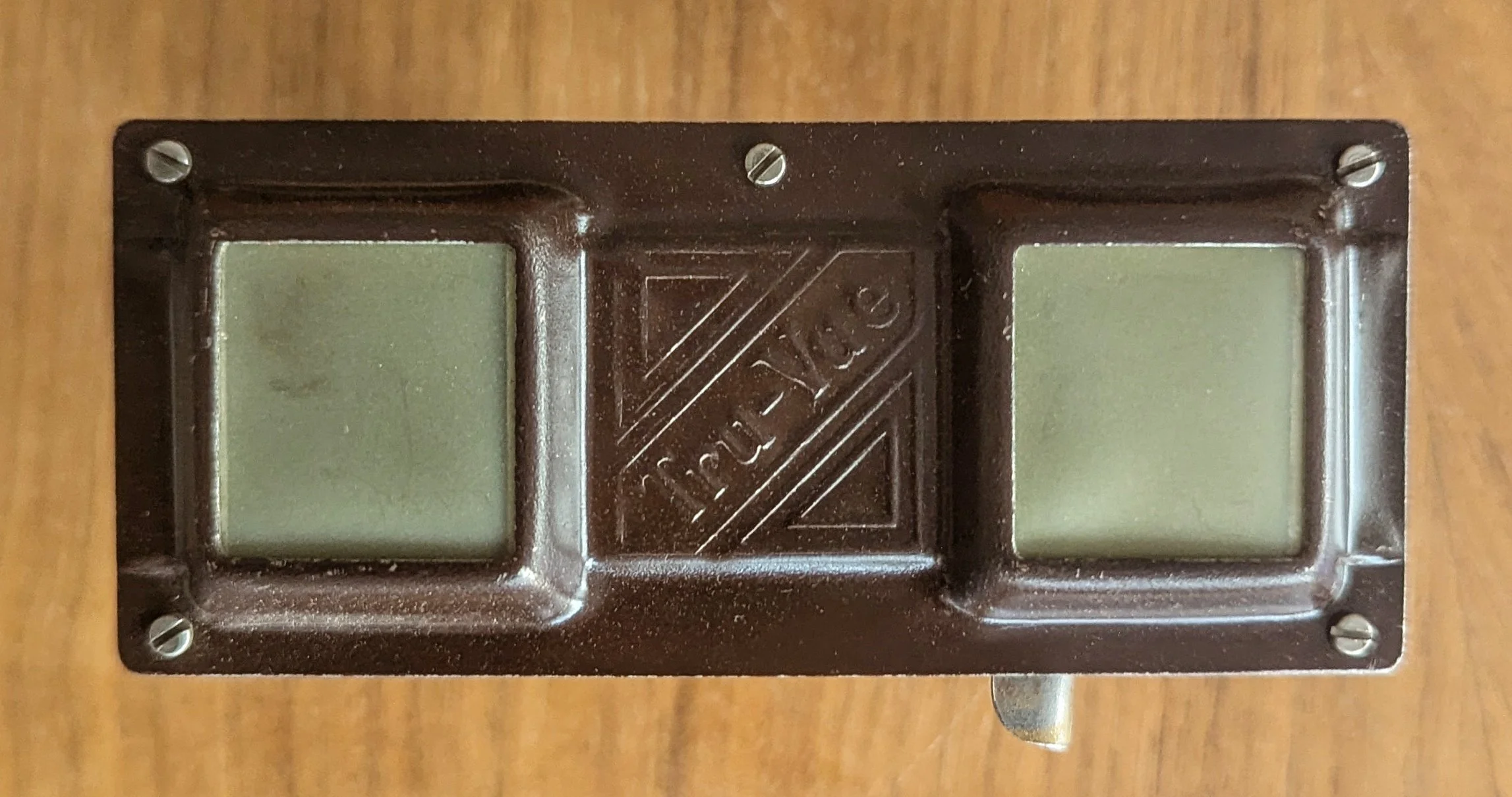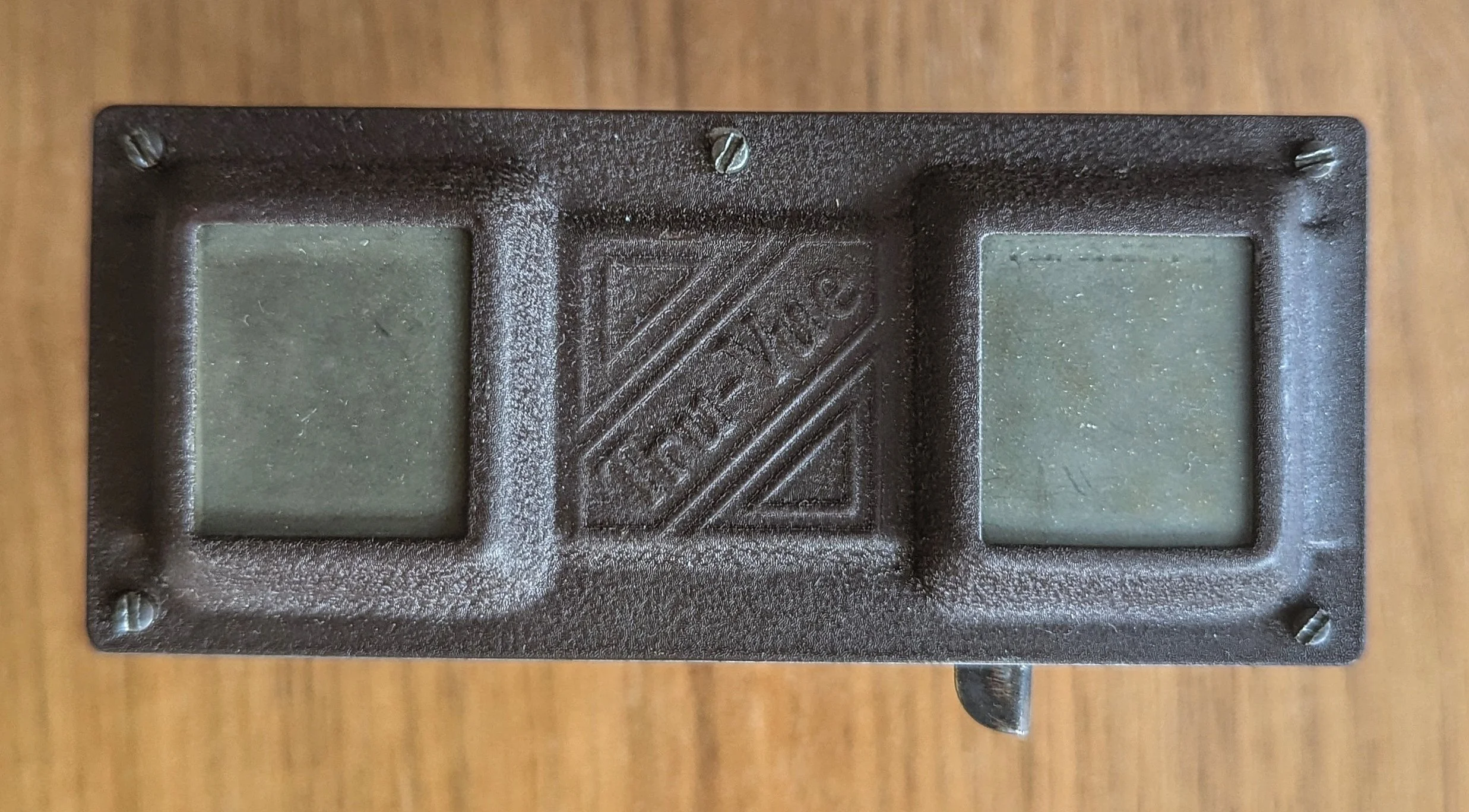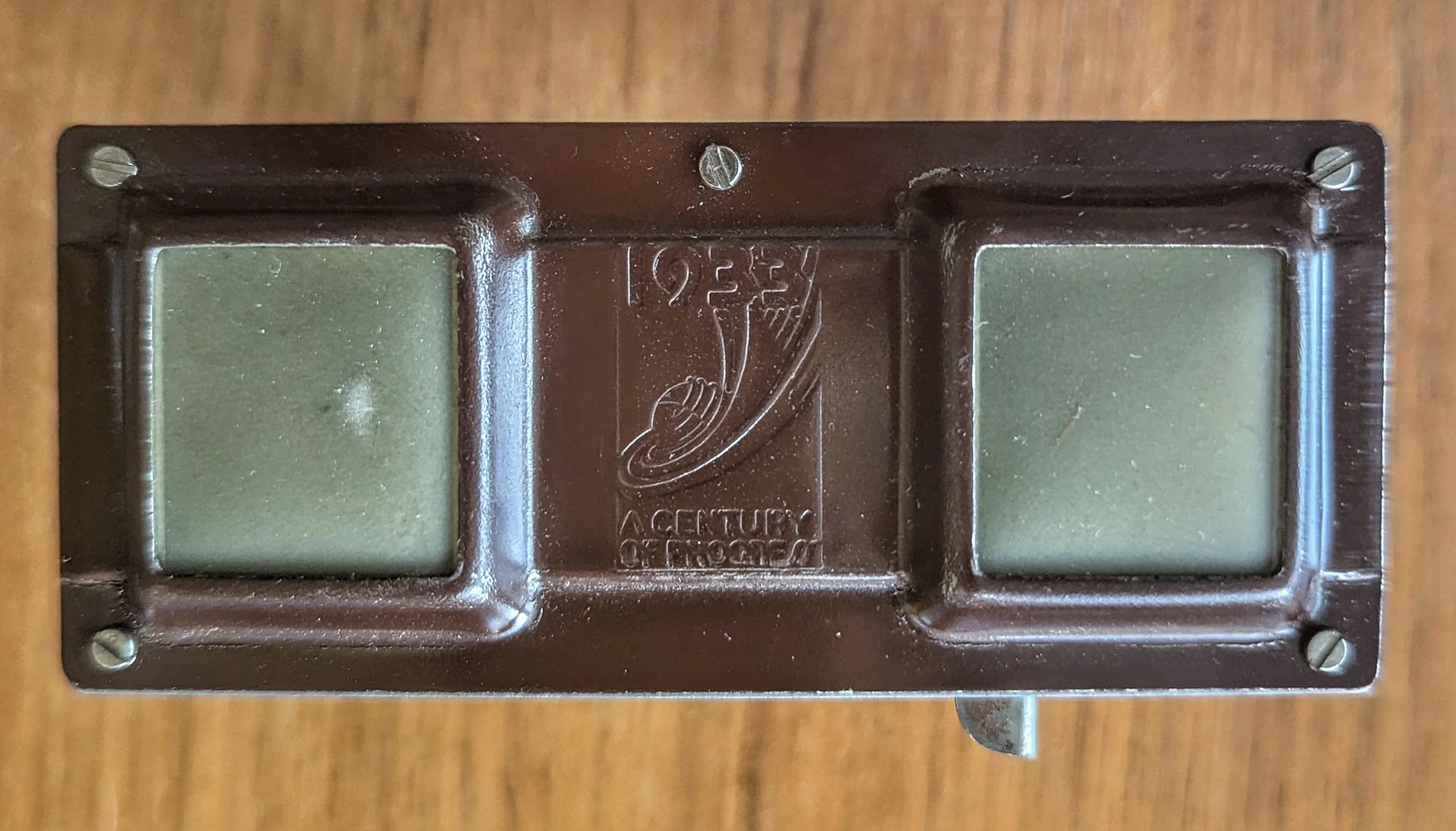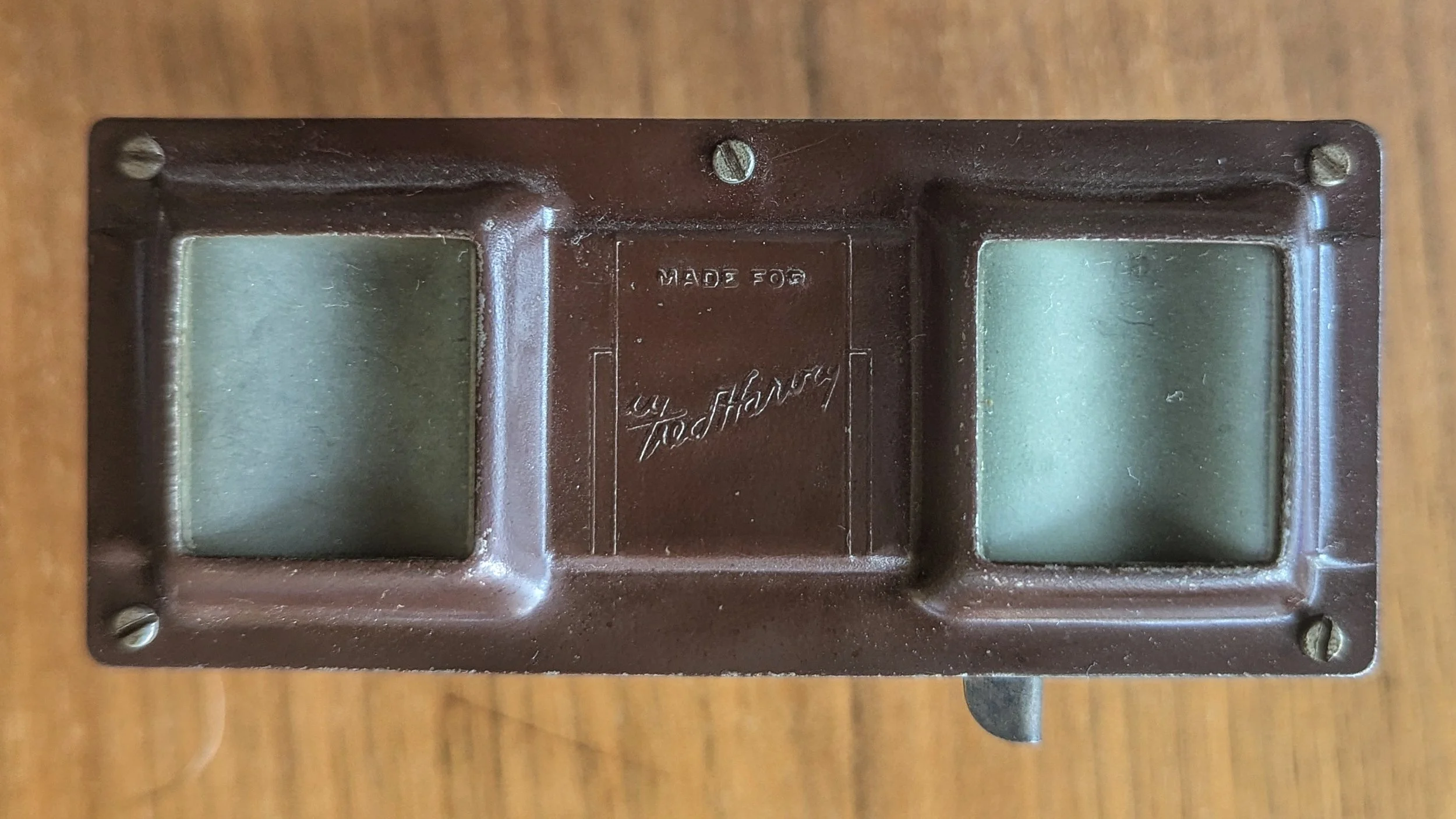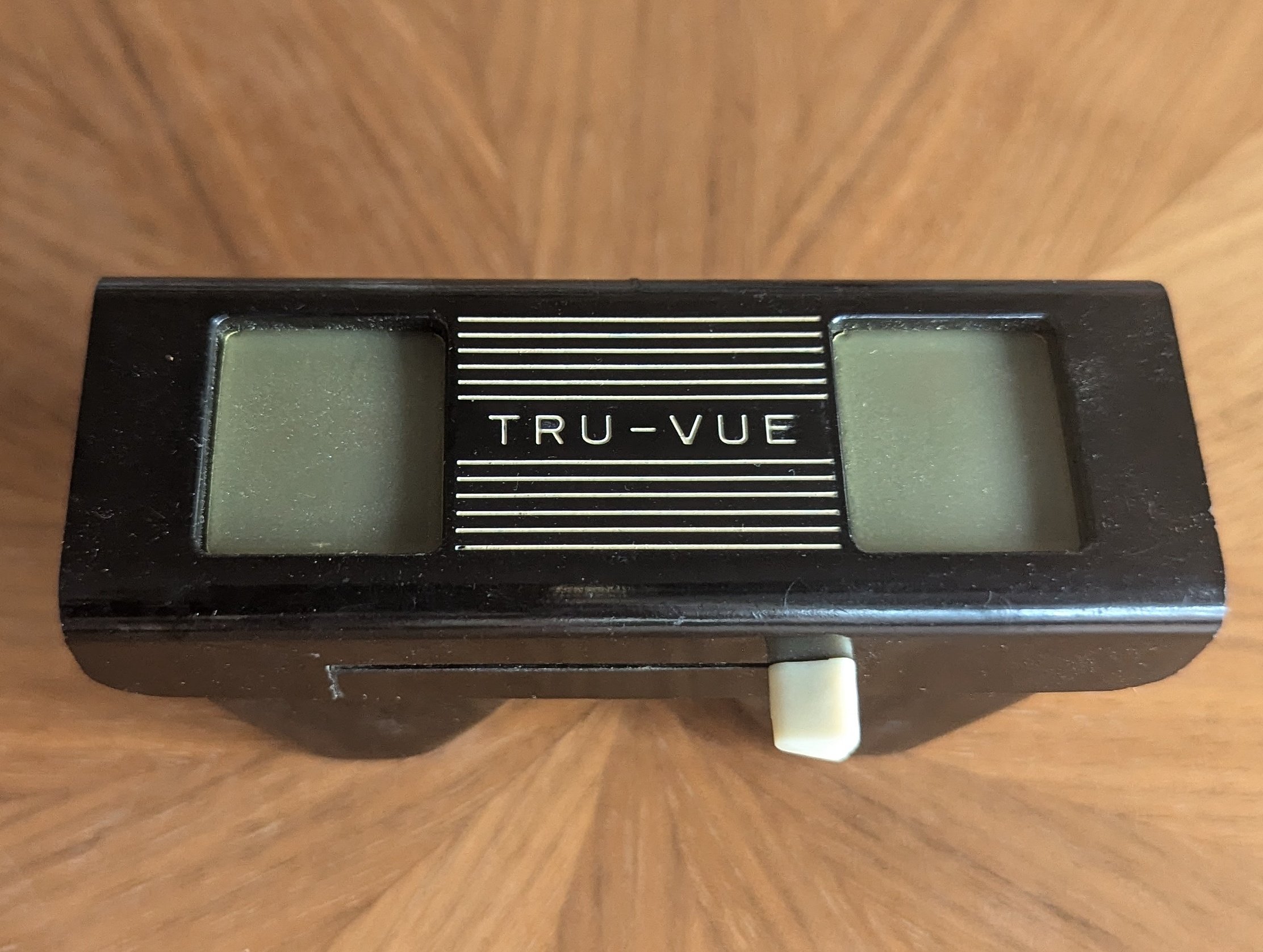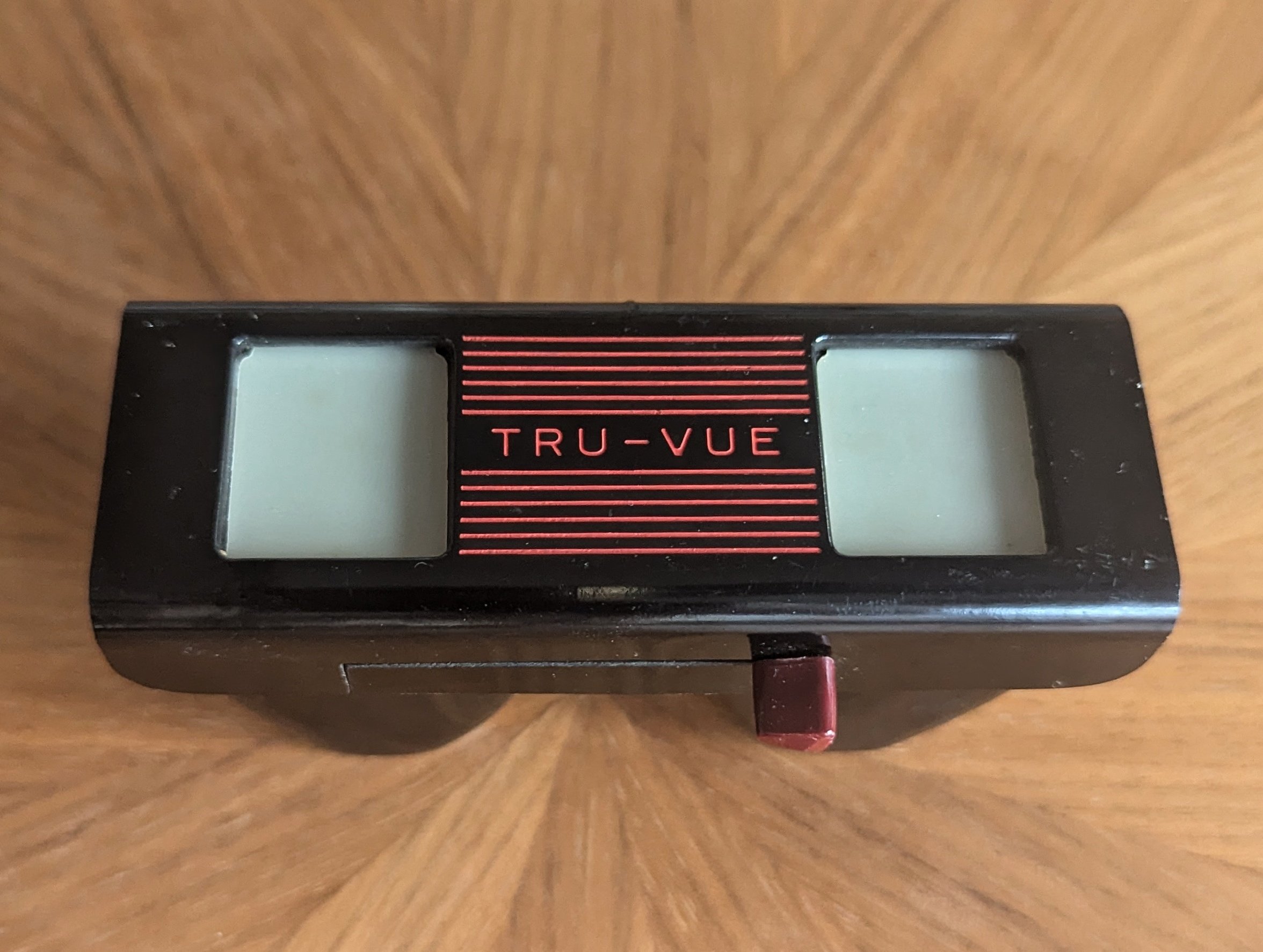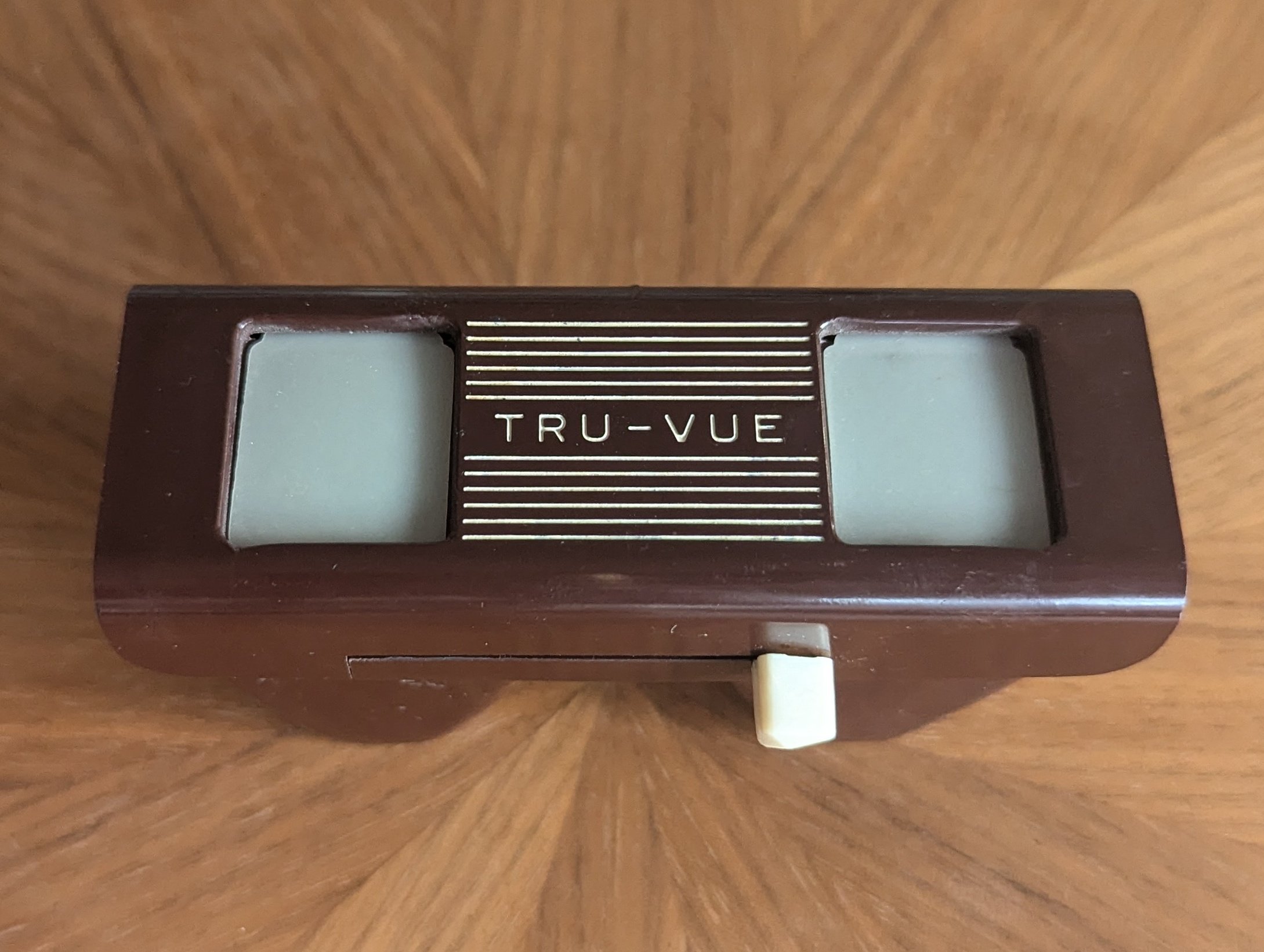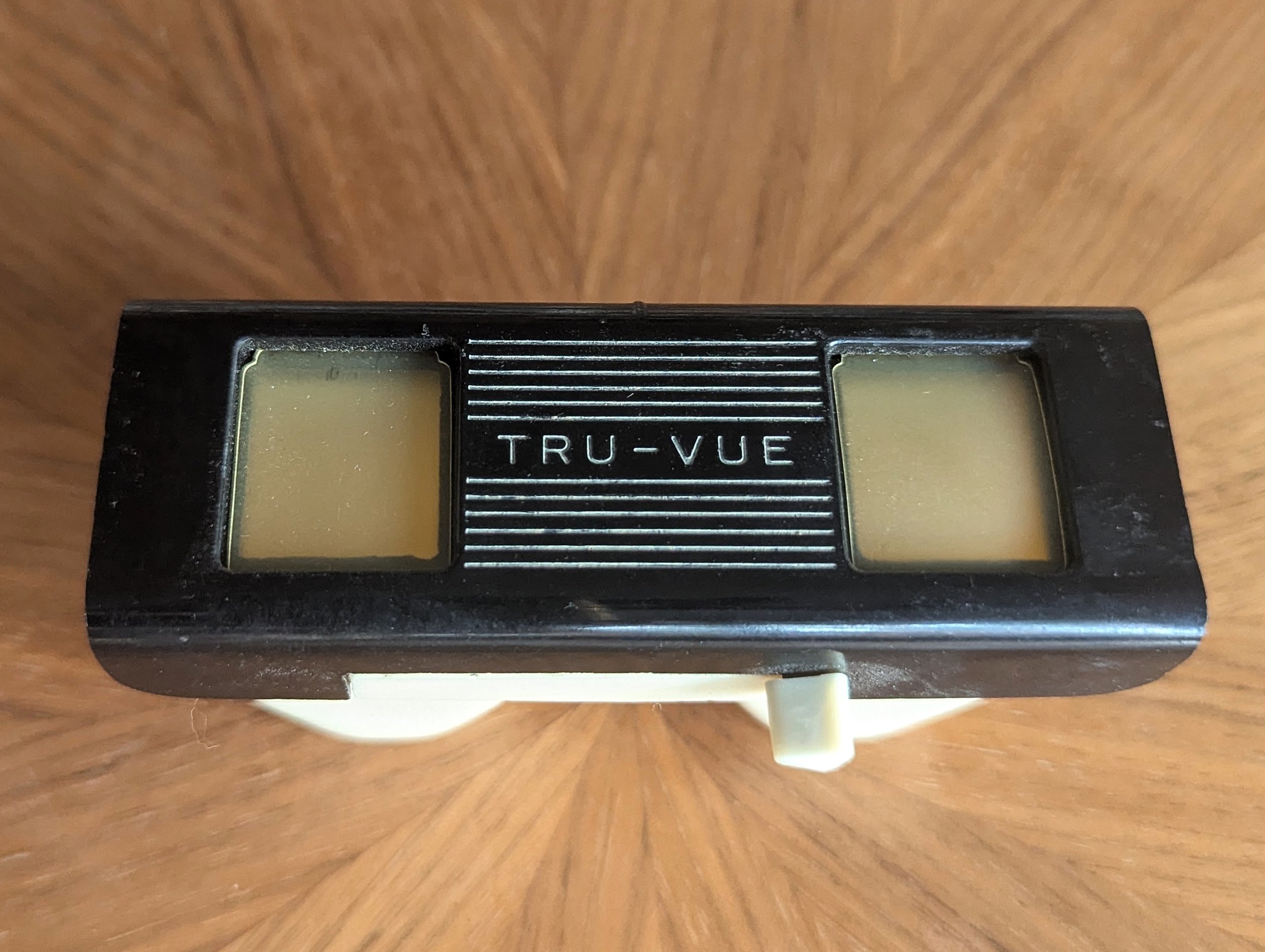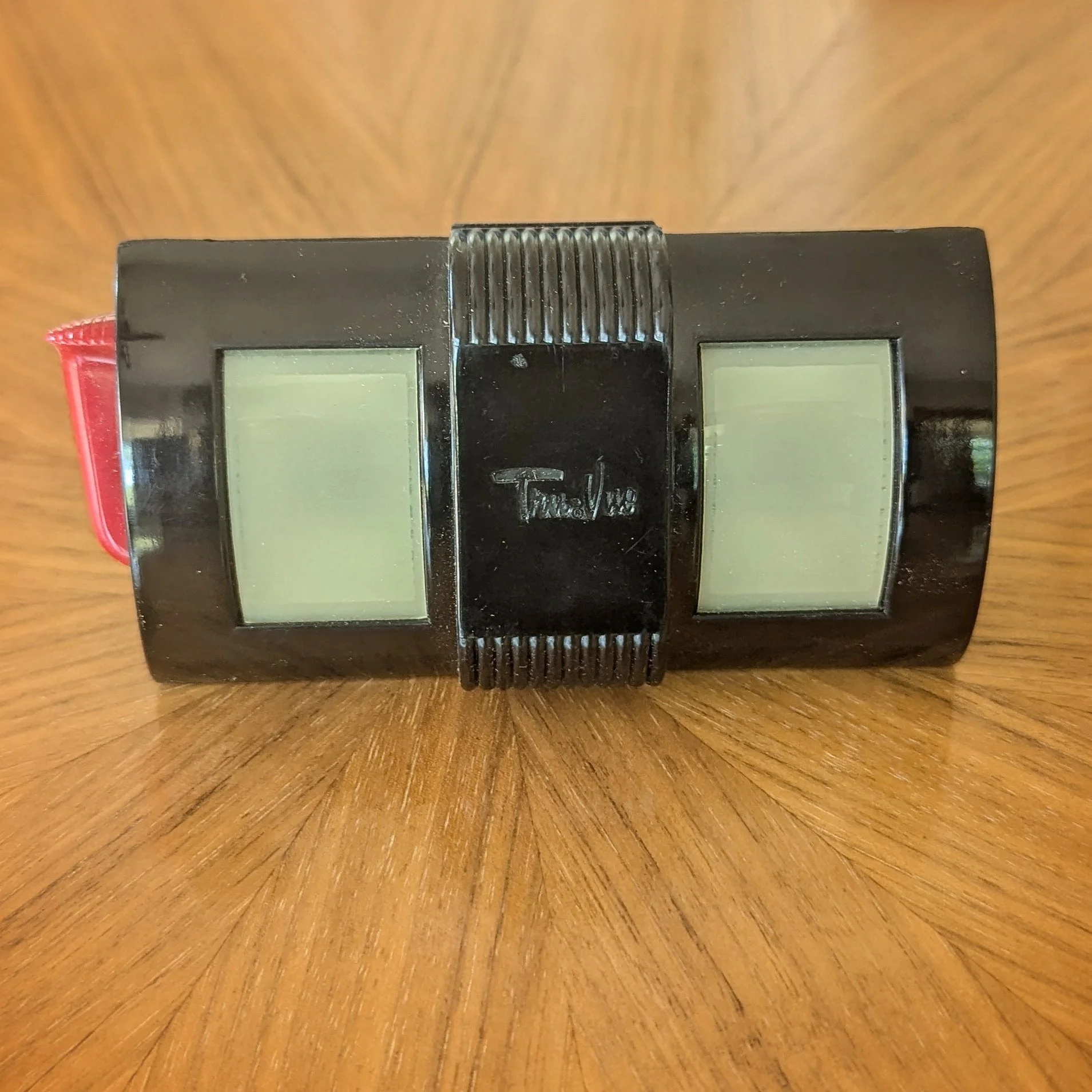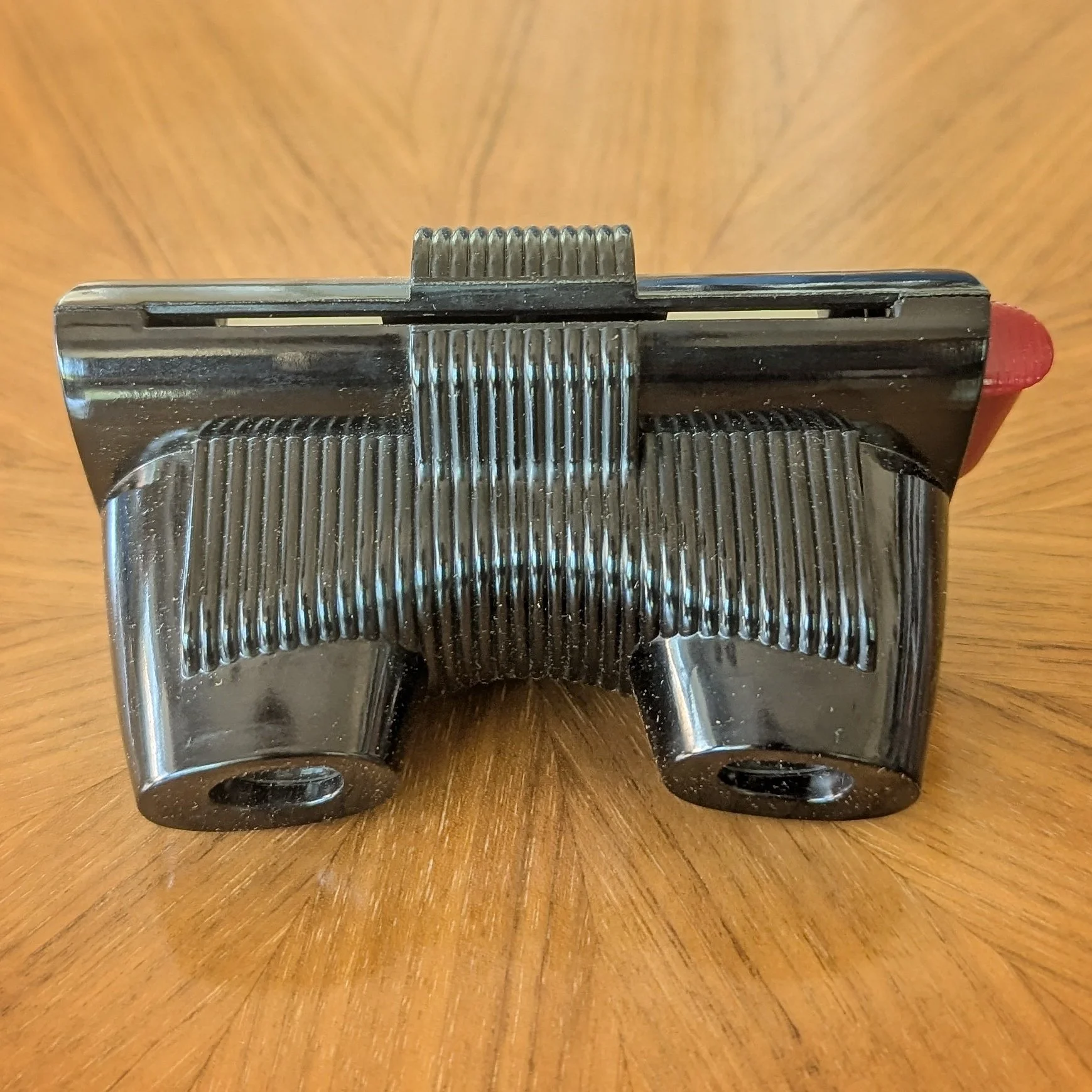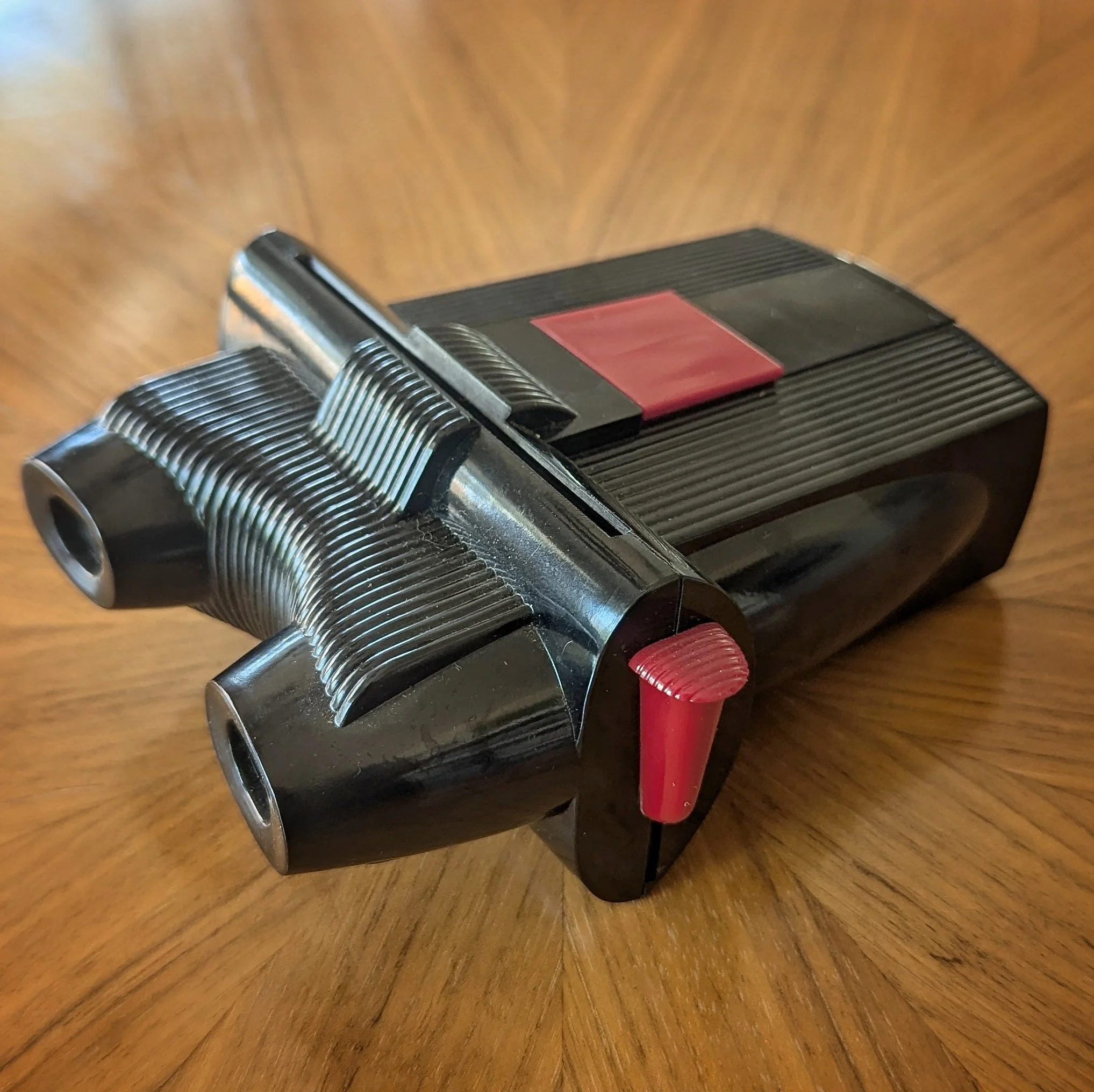Tru-Vue Home | History | Viewers | Filmstrips | Cards | Boxes | Cases | Special Sets | Sales Tools | Advertising
Tru-Vue Viewers
Tru-Vue 3D viewers were the first alternative to the old-fashioned stereoscope that really took off at scale. The viewer itself was small, sold for $1.00 (equivalent to almost $25 in 2025), and was marketed really well. It could be used with hundreds of interesting films and could be found in most department stores and tourist locations. Launched to the public in the early 1930s, it got people all over the world once again entertaining and educating themselves with 3D.
Below, we share the Tru-Vue viewer designs that are in our collection.
Art Deco-Style Filmstrip Viewer (1933 - 1939)
This was the first mass-produced Tru-Vue stereoscope. Joshua H. Bennett was granted the design patent US-D090564-S for the stereoscope casing in 1933, and it was manufactured by Rock Island Bridge & Iron Works. The metal faceplate was attached to the bakelite body with tiny screws. The bakelite was supplied by The Bakelite Corporation and Barber-Colman Company was used for the molding. One of Tru-Vue’s executives gave their reason for choosing bakelite:
“…because of its outstanding characteristics, and because it readily lends itself to molding our unit. It resists scratching, denting and corroding. It is substantial but not heavy. Trademarks may be molded in to look well, and the high gloss, depth of color and finish make it an unusually attractive piece of merchandise.”
~ Maurice S. Carlson, Tru-Vue executive (Modern Plastics, June 1935)
There were standard and special custom versions of the faceplate. Over the 6-year run of this viewer, variations can be found in the screw type, faceplate finish, existence of the patent number, and the faceplate logo.
Standard
The standard Art Deco-style viewers have the Tru-Vue logo on the faceplate. Two of them have a glossy finish — one with bright, shiny flat screws and the other with rounder, dark screws. The earliest ones have “Pat Apld For” on the back and later ones have the patent number. The third version has a matte finish and has the patent number on the back.
1932 - 1934 Glossy Finish, Bright Screws
1934 - Glossy Finish, Dark Screws
1934 - 1939 - Matte / Mottled Finish, Patent Number
Custom
Tru-Vue produced a custom faceplate for the 1933 World’s Fair, the 1934 World’s Fair (not shown), and the Fred Harvey chain of restaurants found at National Parks. They all had the glossy faceplate finish with bright, flat screws.
1933 Century of Progress
1934 - Fred Harvey
Streamlined Filmstrip Viewers (1940 - 1952)
Gifford M. Mast developed this updated, more modern-looking version of the Tru-Vue viewer and it would be their last filmstrip model. It operates the same way as the earlier Art Deco-style viewer, but Tru-Vue claimed this sleeker, no-screw version had 1/3 fewer parts. Over the 12-year run of this model, we know of at least 14 different color combinations that were produced. A few are hard-to-find and a couple are positively rare.
Black
The first streamlined models had a black body and black faceplate. The first version had no color detailing on the faceplate. Later versions had white or red text and lines with the advance lever typically matching the color of the detailing.
No detailing on faceplate
All Black with White Detailing
All Black with Red Detailing
Brown
Next to be released were the brown viewers. The brown versions came in the same text/line detailing patterns as the black versions (none, white, or red), with the addition of a very dark brown, almost black viewer that only had the words “Tru-Vue” in white.
All Brown
All Brown with White Detailing
All Brown with Red Detailing
All (very dark) Brown with "Tru-Vue" in White
Black & White
These were the first introduction of a two-color combo: white body and black faceplate. These were not produced for long and are a bit more difficult to find. They came with either red or white detailing.
Black and White with White Detailing
Black and White with Red Detailing
Brown & White
This brown and white color combo is the last mass-produced version of the streamlined model. Tru-Vue called it “cocoa brown and ivory” in their advertising. We have versions with no detailing on the faceplate, only the text in white, and the text and lines in white.
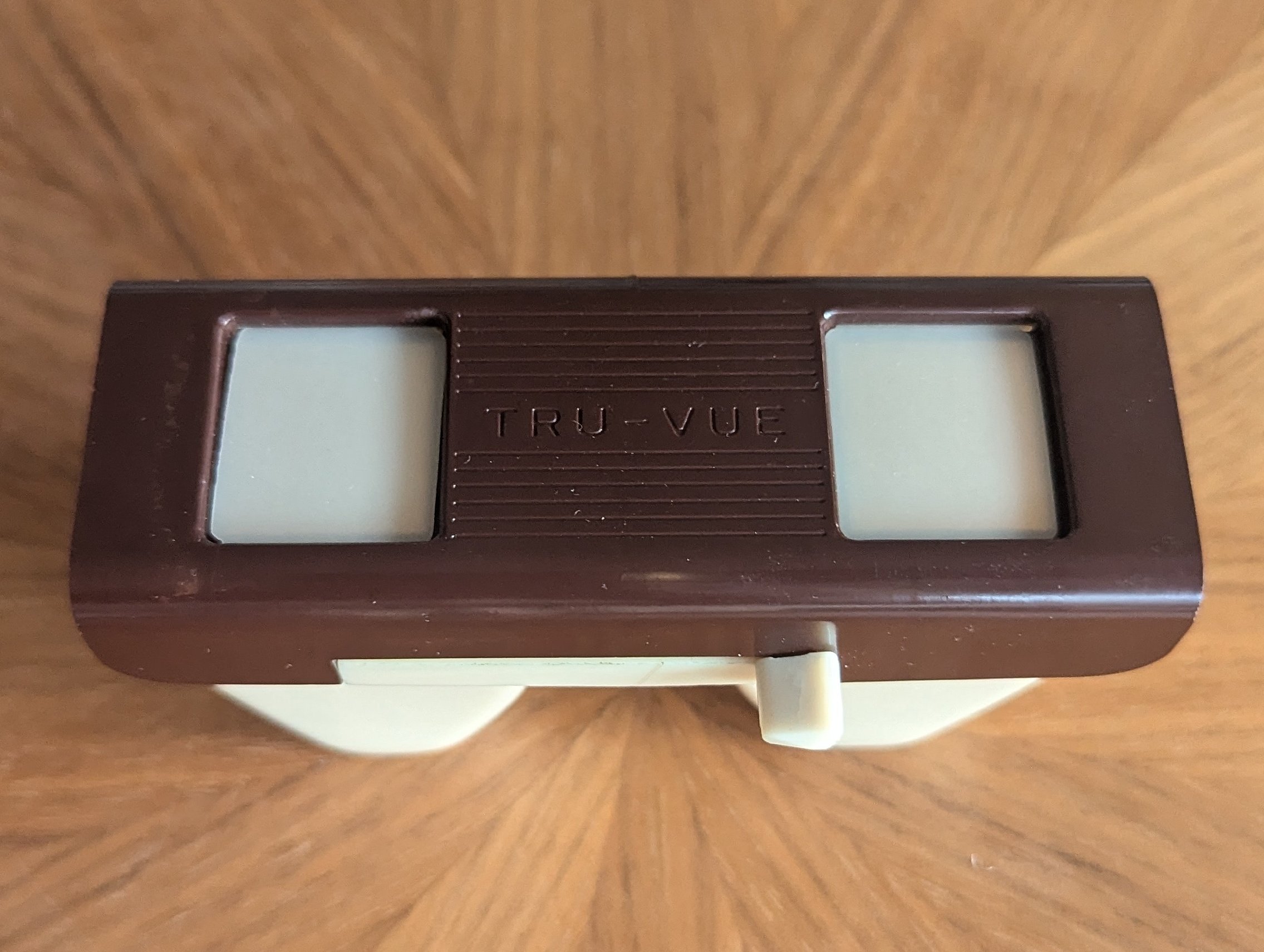
Brown and White, No Detailing
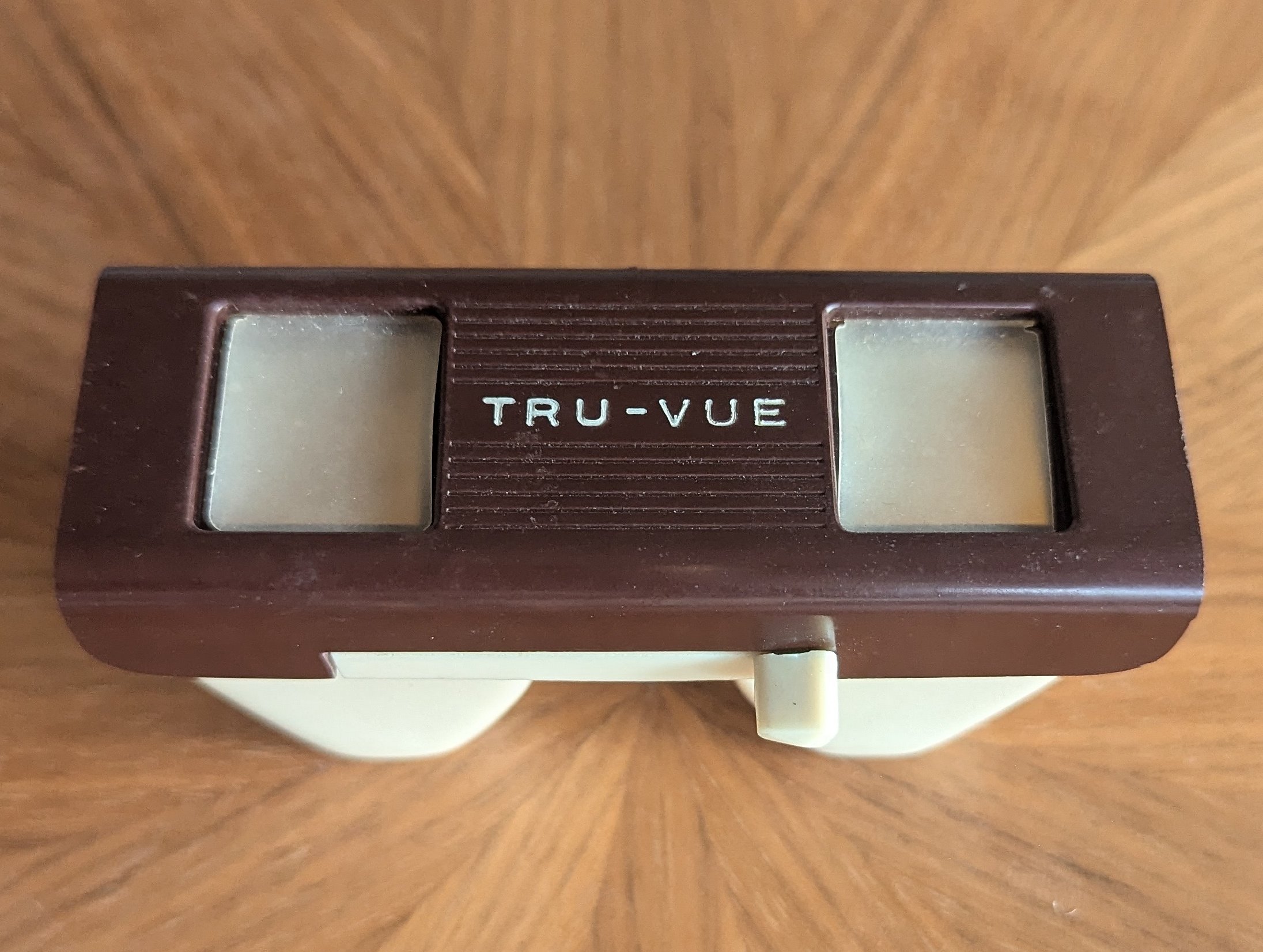
Brown and White with "Tru-Vue" in White
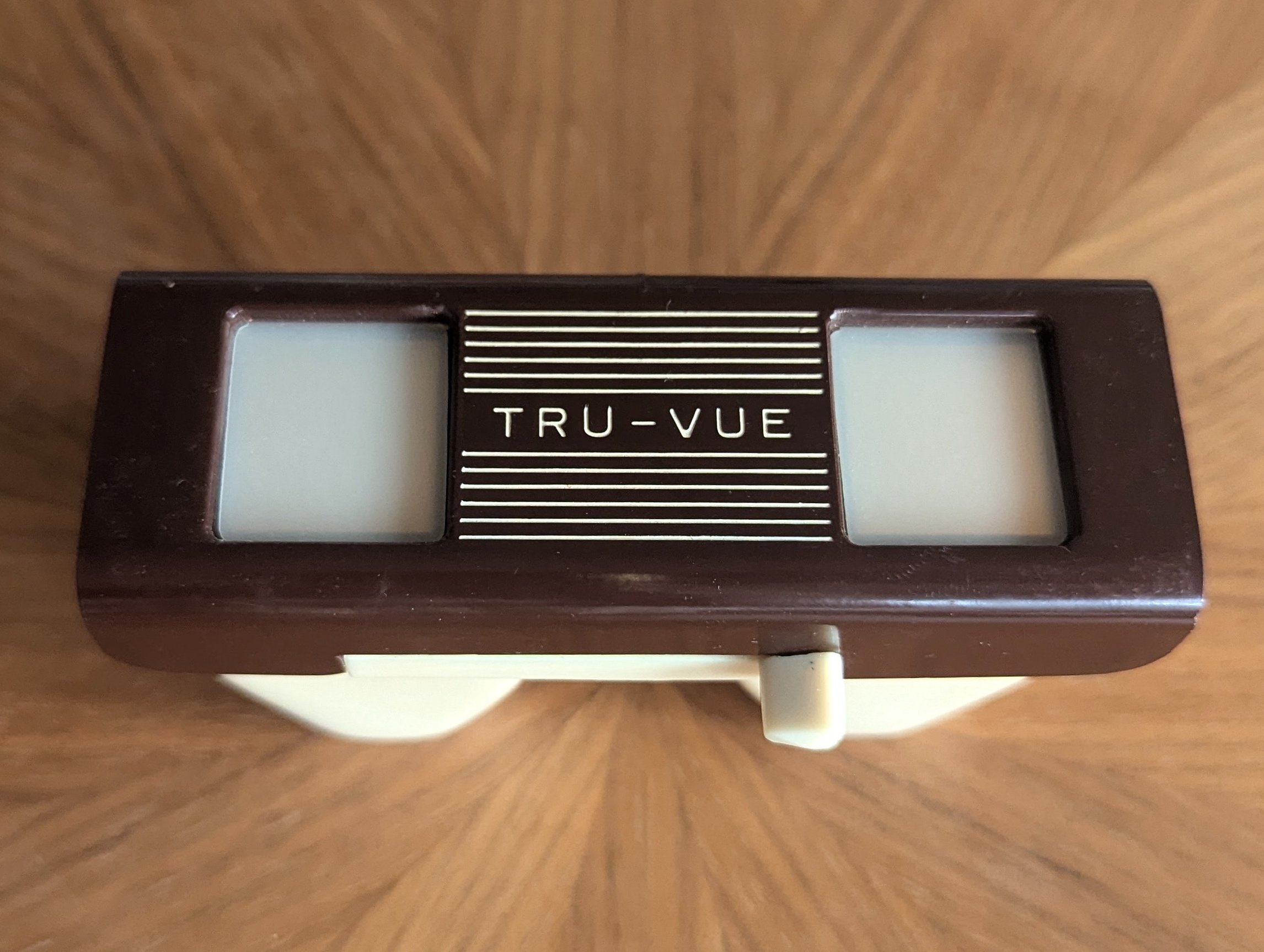
Brown and White with White Detailing
Brown & Yellow
This was a special color combo. It’s rare because not many were made.

Brown and Yellow with Yellow Detailing
Sawyer’s Tru-Vue Card Viewers
After Sawyer’s bought Tru-Vue and relocated operations to Beaverton, Oregon, they discontinued filmstrip production and switched to film cards with 7 stereo pairs per card. They debuted the new Tru-Vue line at the Toy Fair in New York City in March 1953.
Budget Viewer - 1953
The new “Budget” viewer was Tru-Vue’s first multi-card viewer. Clarence L. Romrell, a Tru-Vue employee since its Rock Island days, holds the 1953 design patent US-D171049-S embossed on this viewer. A utility patent covering the functional design was only applied for at the time of the viewer’s release so the viewer also has Patent Applied For embossed on it. That patent was granted to Romrell in 1958 — patent US-2834251 — and covers both the viewer and the 7-pair mounting card used with it. The Budget viewer was marketed to children, but the Tru-Vue engineers made the effort to design the interocular distance so that it would be comfortable for children and adults. The card was advanced through the viewer with the red lever on the side.
Deluxe Lighted Viewer - 1955
This battery-operated, lighted version was the 2nd card viewer Tru-Vue released. It carries the same design patent as the Budget version above.
Junior Viewer - 1958
Sawyer’s was excited to “break the dollar barrier” with this Tru-Vue viewer. Offered at 98 cents, they bragged that it was the first quality 3D viewer retailing for less than a dollar. It came in multiple colors, the more common ones being yellow, red, brown, blue, and medium green. The light, mint green color is less common.
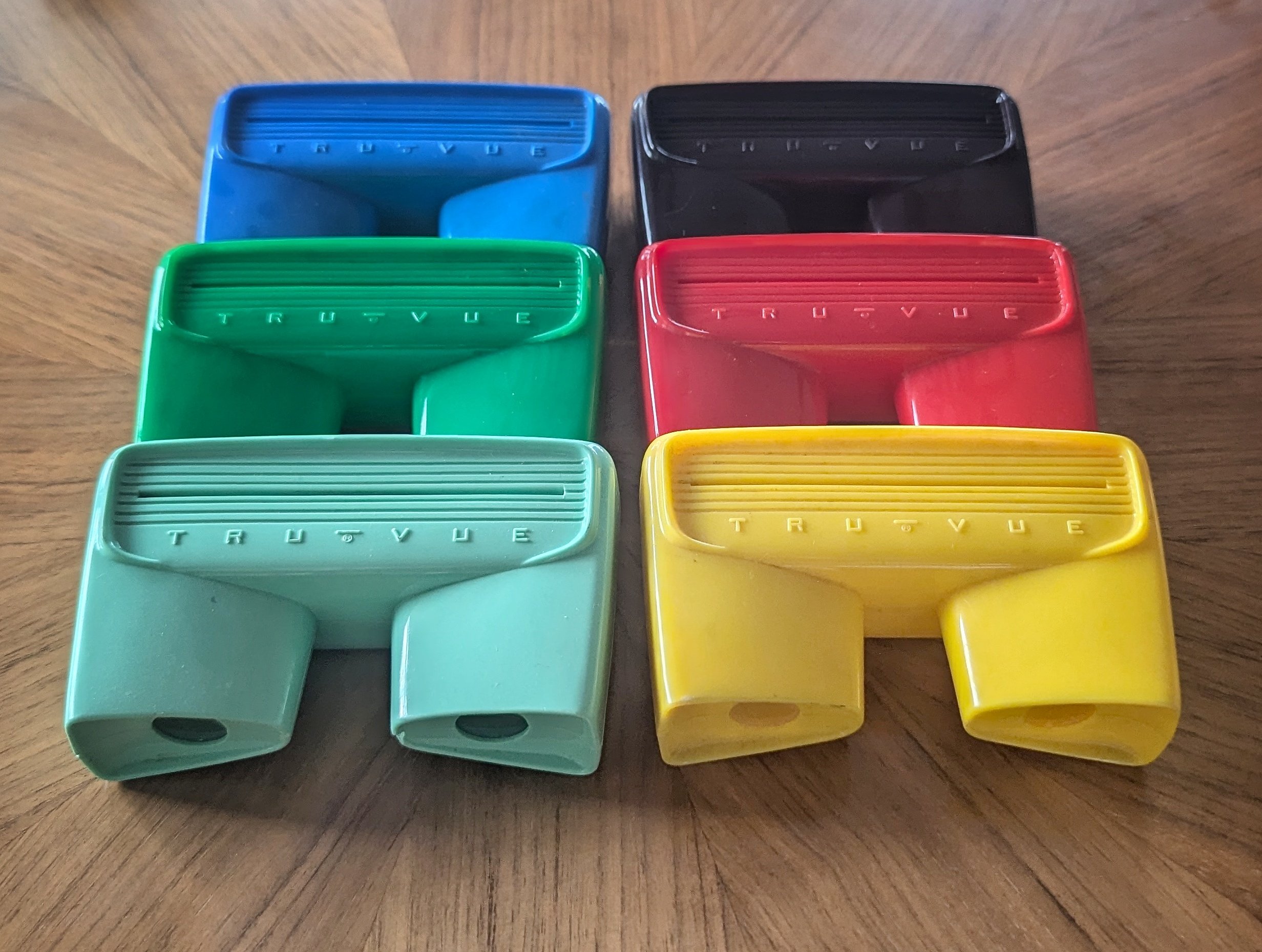

Foldpak / Compact Stereo Viewer
Sawyer’s cardboard Tru-Vue viewers were marketed to companies to use as promotional tools. They experimented with several functional designs.

Style 1
This is the largest, and uses a metal clip to keep the lens board open.
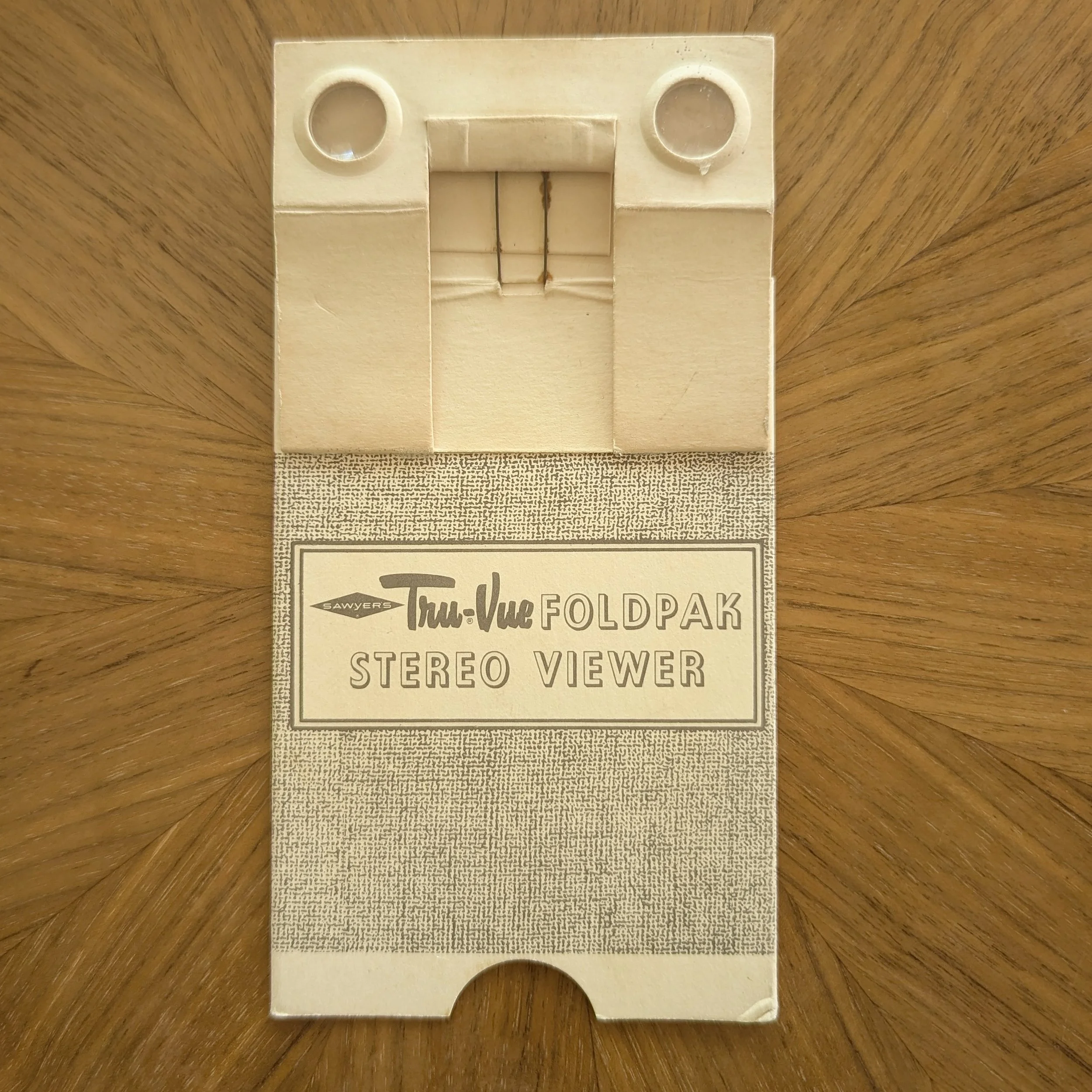

Style 2
This one has metal rivets and uses a cardboard tab that folds downward to keep the lens board in position. Although it still says Tru-Vue Foldpak Stereo Viewer on the outside, the inside says Tru-Vue Compact Stereo Viewer.


Style 3
This design is very similar to Style 2 above but without the rivets. It’s completely branded for Rols.


Style 4
This design uses a rubber band in its operation, and while it also uses a cardboard tab to keep the lens board open, the tab folds upward instead of downward in the viewer. Advantage? You can still see the Tru-Vue branding.



Side-by-side comparison of the two internal tab designs. The one on the right, with the upward folding tab, allows the Tru-Vue branding to be seen when the viewer is open.
Continue to explore our Tru-Vue collection:
Tru-Vue Home | History | Viewers | Filmstrips | Cards | Boxes | Cases | Special Sets | Sales Tools | Advertising
